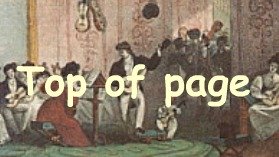The Biography
of Francisco Tárrega
1852-1909
Afflicted with blindness at a young age
This maestro was born in Villareal, in the province of Castellón, Spain. His father was a guitarist, playing various styles including flamenco, though when the young Francisco went for lessons with Julián Arcas, his father insisted he also be taught the piano. This was partly because in 1862, when he began lessons, the guitar was overshadowed by the piano in musical stature. The young Tárrega was thus accomplished at the guitar and piano at an early age. Francisco met with the misfortune of partially losing his eyesight due to an infection. Before his lessons with Julián Arcas, both of his teachers, Eugeni Ruiz and Manuel González were blind. Francisco Tárrega's lessons with Julián Arcas were the consequence of the concert player, during a tour of the region in 1862, hearing Tárrega playing. He advised Tárrega's father to send him for lessons in Barcelona. As we have seen, this Tárrega did, however the lessons stopped shortly after their beginning, when Arcas left for another concert tour abroad. Following this the 10-year old Tárrega, took it upon himself to build his own musical career, making his own concert tour of sorts, by running away and playing in coffee houses and restaurants in Barcelona.This running away was repeated on several occasions over the following childhood years, once to join a band of gypsies in Valencia, but his father always sought him out and brought him home!
Francisco's Tárrega's Carnaval
de Venecia de Paganini
performed by
Christian Wernicke
Tárrega impressed by the new Torres guitar
Age 22 saw the budding Spanish musician entered into the conservatory in Madrid, under the sponsorship of a wealthy merchant , Antonio Canesa. Here he received a thorough instruction in theory of music, harmony, the piano, and composition. The latter he was taught by Emilio Arrieta who convinced him to pursue a career in the guitar rather than the piano. Some years before his enrollment at the conservatory, Tárrega acquired an extraordinarily loud and resonant guitar, from the Seville luthier Antonio Torres. This superior instrument strengthened his opinion of the guitar's potential as a serious musical profession. The Torres design of guitar, became a universal standard in the years to come, and established the spring-board for it's subsequent acceptance by the listening public and academia alike, as an instrument competitive with the major instruments of the era. By the late 1870's Tárrega was working as a music and guitar teacher, he taught both Miguel Llobet and Emilio Pujol. Regular concerts were received with much acclaim, and other regions of Spain beckoned to hear his renditions of original works, and those of other composers. After performing in Novelda, Alicante the playing of a local female guitarist, María José Rizo, the daughter of a townsman, was brought to his attention. Soon the two string-pluckers were engaged, and married in 1881, settling Madrid as their home.Concert tours in 1880 to Paris and London followed, where he was hailed as the "Sarasate (Pablo de Sarasate (1844-1908) a famous Spanish violinist) of the guitar". To enlarge his repertory, Tárrega used his extensive knowledge of piano music, to transcribe piano works by Beethoven, Chopin, Louis Moreau Gottshcalk (an American pianist), Sigismond Thalberg (A Swiss pianist) Mendelssohn and others.
Tárrega the composer
In 1885 the esteemed Spaniard's family settled permanently in Barcelona where he counted the likes of Isaac Albeniz, Enrique Granados , Joaquín Turina, and the cellist Pablo Casals as his friends. A wealthy widow, Conxa Martinez, was introduced to Tarrega in Valencia and came to be a valuable patron for the musician. His family had the use of one of of her houses in Barcelona, where he wrote many of his most popular works. A visit to Granada with this patron of the arts, spawned Francisco Tárrega's famous Requerdos de la Alhambra solo guitar composition, which he wrote after experiencing the 14th century Moor-built palace in Andalucia : Alhambra. In 1900 Tárrega visited Algeria, where he heard a distinctive rythm played on an Arabian drum. This rythm was subsequently used later to compose the famous Danza Mora solo guitar piece. Breaking with his past technique, Tárrega cut his fingernails around 1902, the resulting effect being a more mellow tone which was to become associated with guitarists of the Tárrega school of guitar playing. His concert playing career continued with much success, including a tour of Italy where he played in Rome, Naples and Milan.Francisco Tárrega's transciption of a Chopin Mazurka performed by Stefano Grondono
Age 54, and Tárrega was at the height of his fame, when tragedy struck as he was afflicted with a paralysis of the right side of his body. He was able to return to the stage, but never fully recovered from the injury. His last work , Oremus was composed 13 days before his final breath on the 15 December 1909, at the age of 57.
Francisco Tárrega is regarded as having laid the foundations for the 20th century's wide-spread acceptance of the guitar as a concert-recital instrument. The Maestro himself preferred small intimate performances, which particularly suited the lower-volume generated by his lack of fingernails. He composed in a variety of styles and forms including Valses, mazurkas, preludes, tangos. However with 78 original works, and 120 transcriptions he clearly appreciated the work of other composers , and used their works to further the reputations and esteem of his chosen instrument, as well as his own as a performer. Through his pupil Miguel Lobet, Tarrega passed on the traditions of the instrument to that other notable Maestro of the guitar, a pupil of Lobet, Andres Segovia. Tárrega's list of works include Sherzo's, preludes, estudios, danzas, fantasias, minuets, mazurkas, tangos and more.
Other Late-Romantic guitar composers :






